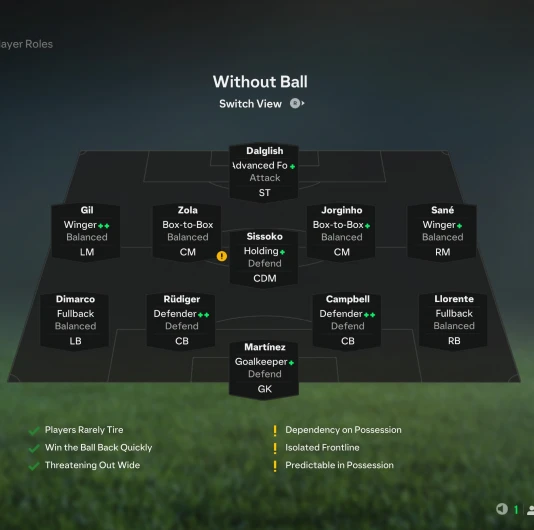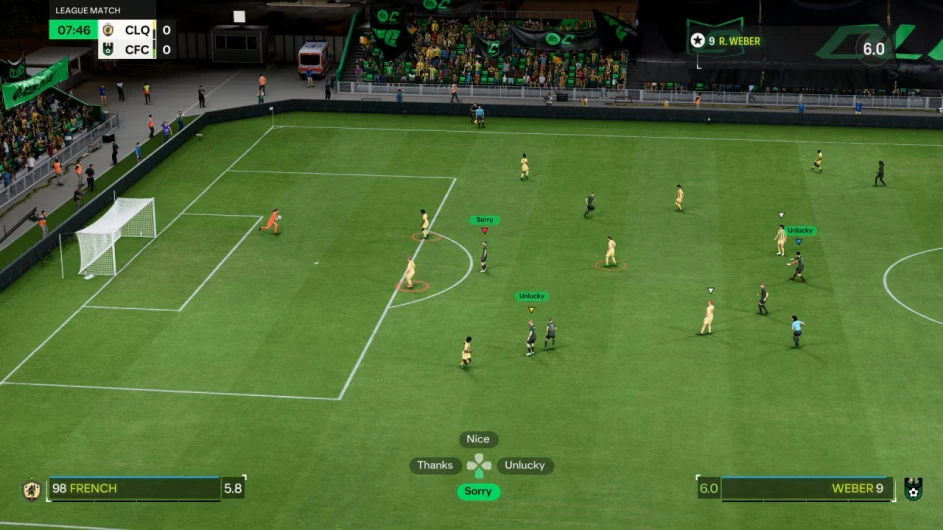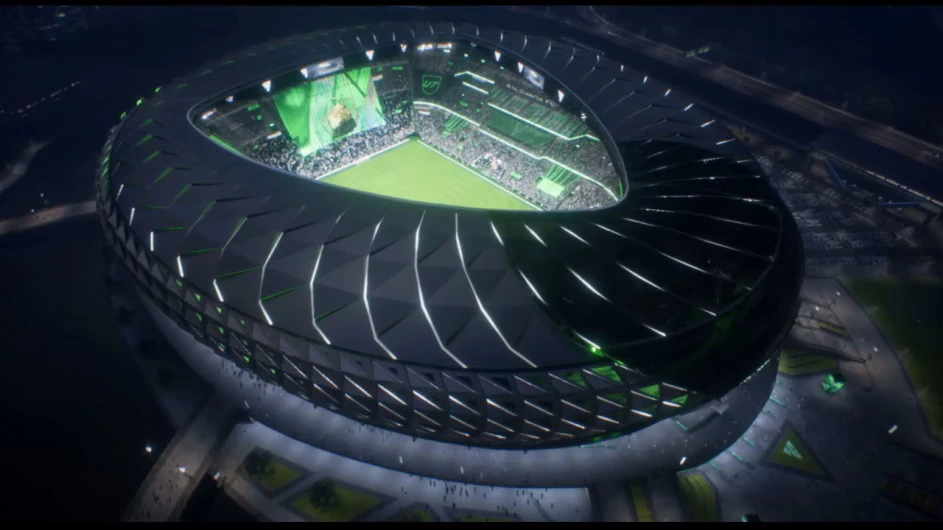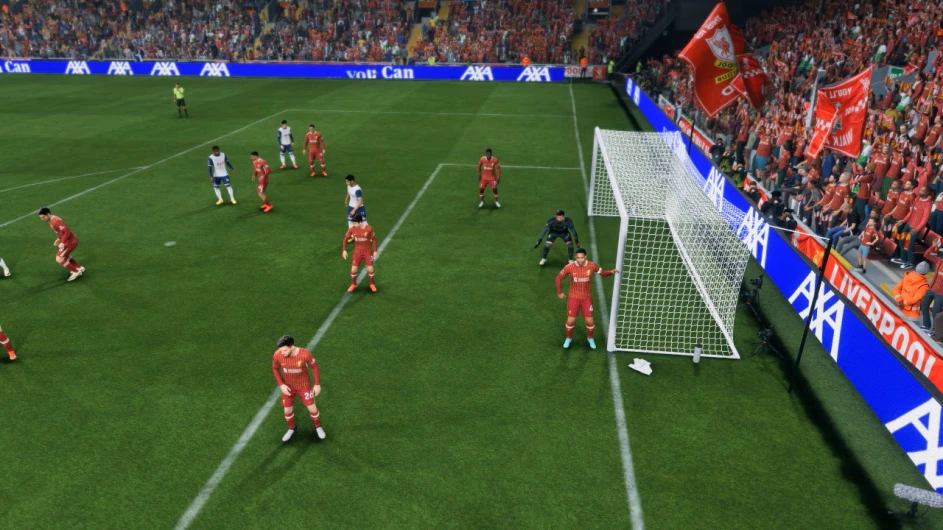
Mastering the 4-1-4-1 Formation in EA FC 25
- The Strengths of the 4-1-4-1 Formation
- Formation Breakdown: 4-1-4-1
- How to Make the Most of the 4-1-4-1 in FC 25
- Tactical Instructions for the 4-3-3
- Conclusion
When it comes to creating a balanced, effective strategy in FC 25, finding the right formation and player instructions can be the difference between a solid, well-oiled machine and a team that struggles to keep up. One of the best formations to employ, especially for players who prefer a strong defensive setup with dynamic attacking options, is the 4-1-4-1 formation. This versatile and balanced system allows for defensive stability while also providing a potent offensive threat. In this article, we’ll delve into the 4-1-4-1 formation, providing key instructions to make your players perform at their best both defensively and offensively.
The Strengths of the 4-1-4-1 Formation
The 4-1-4-1 formation is an ideal choice for players who want to control the game through the midfield, defend with strength and discipline, and still have ample attacking options. Here's why:
1. Defensive Stability: The formation's backline, consisting of two center-backs and fullbacks, is compact enough to close down space and deny opposition attacks. The addition of a CDM (Central Defensive Midfielder) provides an extra layer of protection, shielding the defense and breaking up attacks before they reach the center-backs.
2. Midfield Control: With 4 midfielders (1 CDM and 2 CMs), you have plenty of options in possession. The CDM serves as the holding anchor while the CMs contribute box-to-box action, covering both defensive and attacking responsibilities.
3. Attacking Flexibility: While you have a single ST (Striker), the wide players – LM (Left Midfielder) and RM (Right Midfielder) – can provide attacking width. The RM, in particular, can push higher up as a wide forward, and the LM can be a playmaker, orchestrating attacks from the flanks.
4. Defensive Solidarity and High Pressing: The single ST acts as your first line of defense, with both wide midfielders offering support in defensive transitions. This allows for a solid pressing game while maintaining structure at the back.
Formation Breakdown: 4-1-4-1
Goalkeeper (GK): Sweeper Keeper, Balanced
The goalkeeper should be set to Sweeper Keeper with Balanced instructions. This enables your keeper to actively come off their line to clear through balls and act as an additional layer of defense when the opposition breaks through. By leaving the goalkeeper on Balanced, they won’t commit to risky behaviors like high-line sweeper duties unless required, but they will still remain proactive.
Center-Backs (CBs): Defender++, Defend
For the CBs, the ideal instruction is Defender++, where the focus is on maintaining a solid defensive line. The Defend instruction ensures they won’t venture too far forward, keeping them positioned in the right areas to intercept passes and clear the ball when needed. These center-backs should be focused on winning aerial duels, blocking shots, and providing cover for the fullbacks.
Left-Back (LB) & Right-Back (RB): Fullback, Balanced
The LB and RB will be instructed to play as Fullbacks with Balanced support. This means they will provide width in both defensive and attacking phases, supporting the wingers and fullbacks during offensive moves, while also being mindful of their defensive duties. The Balanced instruction allows them to decide when to overlap the wingers or when to stay back and provide cover. This fluidity is key to maintaining a balanced team structure throughout the match.
Central Defensive Midfielder (CDM): Holding
Your CDM plays the crucial role of protecting the defense. Set them to Holding, meaning they will stay in a disciplined, deep-lying role. Their primary job is to break up opposition attacks and distribute the ball to more advanced teammates. This player must have high defensive stats, good vision, and passing abilities to efficiently transition the ball out of defense into the midfield or forward areas.
Central Midfielders (CMs): Box-to-Box, Balanced
Both CMs should be instructed to play as Box-to-Box midfielders with Balanced instructions. These players are vital to linking up defense with attack, contributing both offensively and defensively. Their job is to cover large areas of the pitch, support the CDM when defending, and surge forward to join attacks when the team is in possession. The Balanced setting ensures that they won’t be overly defensive or attacking, but rather provide the necessary stability and energy across the entire midfield.
Left Midfielder (LM): Wide Playmaker, Build Up
For the LM, set them to be a Wide Playmaker with Build Up. The Wide Playmaker instruction encourages this player to create attacking moves from the wide position, looking to deliver key passes and crosses into the box. Meanwhile, the Build Up setting means they will focus on initiating the attack, distributing the ball carefully, and ensuring that the team’s play is more patient and controlled, rather than rushing forward recklessly.
Right Midfielder (RM): Wide Forward, Attack
On the right side, the RM should be instructed to play as a Wide Forward with an Attack mentality. This creates a dynamic attacking presence, with the RM pushing up into more advanced positions, often overlapping with the ST to create goal-scoring opportunities. The Attack mentality will ensure that they’re always looking to get into dangerous positions in the final third, either to finish crosses or to cut inside and shoot.
Striker (ST): Advanced Forward, Attack
Finally, the ST should be set to Advanced Forward with Attack instructions. This forward will be your primary goal-scoring threat, always looking to get in behind the opposition defense and finish chances with pace and precision. The Advanced Forward role encourages constant movement, pulling defenders out of position and making runs that open up space for others. Their attack mentality ensures they are always positioned in advanced areas, making them a focal point of your offensive play.
How to Make the Most of the 4-1-4-1 in FC 25
1. Defensive Pressing
The 4-1-4-1 offers an excellent platform for high pressing, especially with your ST, LM, and RM working together to press from the front. Use this formation to hunt down the ball high up the pitch and force the opposition into mistakes. The compact midfield allows your players to support each other during transitions, whether attacking or defending.
2. Possession Play
The midfield triangle (CDM and two CMs) will help you dominate possession. Make sure to use short, quick passes and switch the ball from one side to the other. The LM can become a key creator, and the RM can provide width, stretching the defense. The ST will pull defenders out of position, creating space for your midfielders to exploit.
3. Quick Transitions
The RM and ST can counter quickly, using their pace to break through the opposition's defense. At the same time, your LB and RB can join the attack when the team has possession, delivering crosses into the box or providing an extra option in wide areas.
4. Balance Between Attack and Defense
One of the key advantages of the 4-1-4-1 is its ability to remain compact and balanced. The CDM is crucial for breaking up attacks, and with the two CMs providing cover, your defense remains solid. Meanwhile, your RM and LM give your team wide options when attacking, ensuring you can stretch the opponent’s defense and create dangerous overloads.
Tactical Instructions for the 4-3-3
1. Defensive Approach: Balanced
A balanced defensive style helps maintain structure while allowing for counter-attacks. It provides flexibility in defending against various styles of play. This setting ensures that your team remains compact defensively and does not overcommit players forward. The Balanced defensive style allows for a mixture of pressing high when necessary and holding a solid shape when under pressure.
2. Line Height: 50
A depth of 40 strikes a balance between pressing high up the pitch and maintaining enough cover at the back. This allows your team to win the ball back quickly while still being cautious of fast counter-attacks.
3. Build-Up Style: Counter
In the 4-3-3 formation, a Counter build-up style is perfectly suited for exploiting the width and pace of your wingers and the incisive runs of your striker. This approach prioritizes rapid transitions, encouraging your team to quickly move the ball up the field after recovering possession. With this tactic, your players aim to catch opponents off guard, capitalizing on defensive disorganization during transitions. Counter build-up play relies on precise, forward-oriented passing and intelligent off-the-ball movement. As soon as possession is regained, your wingers will dart down the flanks, the strikers will position themselves to receive through balls, and the midfielders will drive forward to support the attack. This creates a high-tempo style of play, forcing your opponent to scramble back defensively. With the natural width of the 4-3-3 formation, this tactic stretches the opposition, creating gaps for your forwards and midfielders to exploit.
Conclusion
The 4-1-4-1 formation is a fantastic setup in FC 25 for players who want a well-rounded approach to both defense and attack. By giving specific instructions to each player, you can create a dynamic and flexible system that allows you to control possession, press high up the pitch, and maintain defensive solidity. Whether you're playing against a strong opponent or looking to dominate possession, this formation offers the perfect balance of structure and freedom.
Implement these player instructions, adapt to your opponents, and enjoy the success that comes from a well-coached, balanced team.
We will share more updates on FC 25 in separate articles. If you found this information helpful or would like to learn more, please explore the other articles on our site.








